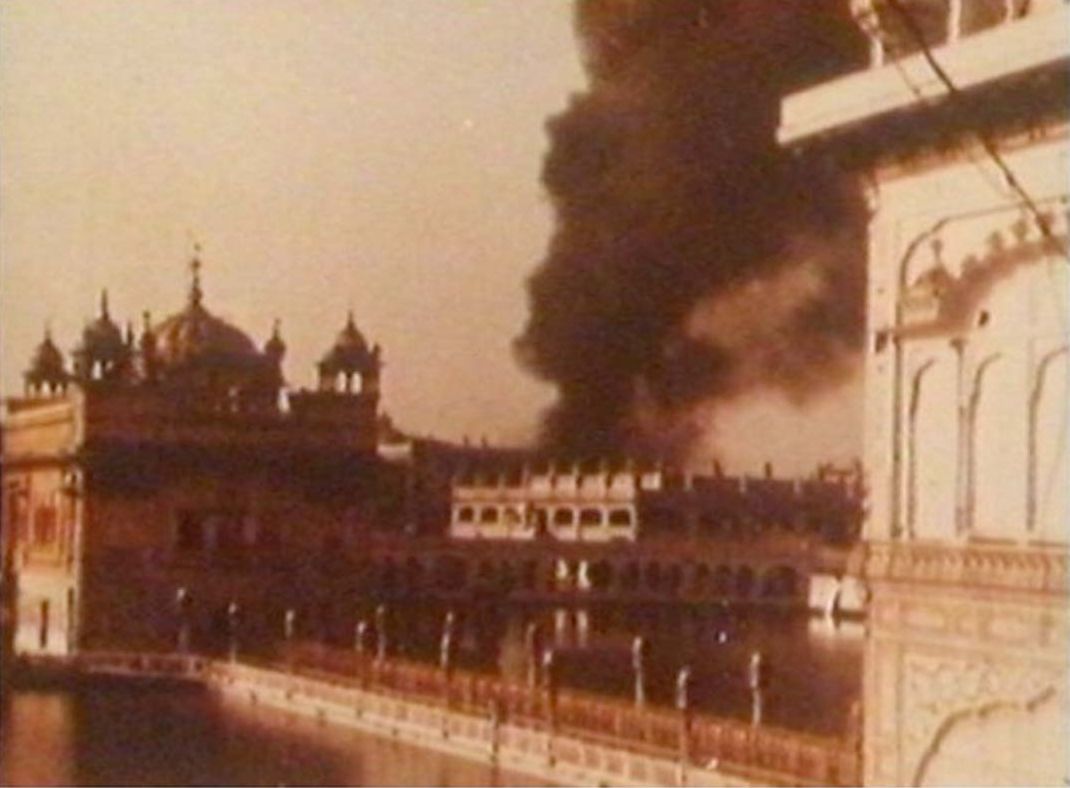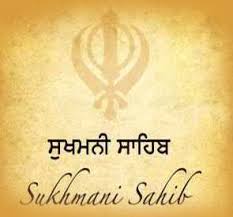
ÂSÂ KÎ VÂR, as recorded in the index to the Gurû Granth Sâhib, but commonly designated Âsâ dî Vâr, lit. an ode (vâr) in the musical measure Âsâ, is a composition by Gurû Nânak Dev Ji sung by musicians at Sikh congregations as part of the early morning service.
Âsâ is the râga of pre-dawn hours and the custom of reciting the hymn at morning time is traced to the days of Gurû Nânak Dev Ji himself. It is said that Bhâî Lahiṇâ (later, Gurû Aṅgad Dev Ji) was the first to sing it in the presence of Gurû Nânak Dev Ji. The Vâr then comprised twenty-four pauṛîs or stanzas by Gurû Nânak Dev Ji and some úlokas which were also of his composition as indicated in the title given it by Gurû Arjan Dev Ji when entering the composition in the Holy Guru Granth Sahib (salok bhî mahalle pahile ke likhe), the úlokas were also composed by the First Guru, Gurû Nânak Dev Ji.
In its present form, it carries twenty-four stanzas with a total of fifty-nine úlokas, 45 by Gurû Nânak Dev Ji and 14 by Gurû Aṅgad Dev Ji. At the time of recitation, the choir will prefix each of the stanzas by a quatrain from the series by Gurû Râm Dâs Ji entered separately under Râga Âsâ, collectively known as chhakkâs, or sextettes from the groups of six quatrains each counting as a unit. They will also punctuate the singing with illustrative hymns from Gurû Granth Sâhib Ji and with passages from Bhâî Gurdâs Ji and Bhâî Nand Lâl Ji whose compositions constitute approved texts. According to the musical direction recorded by Gurû Arjan Dev Ji at the beginning of the Vâr, it is meant to be recited in the tune of an old folk ballad which had as its hero a prince by the name of Asrâjâ, called Ṭuṇḍâ Asrâj because of a maimed hand (ṭuṇḍâ).
From passage to passage, the Vâr touches upon several different themes, but one central point of emphasis is the state of man, and how he may liberate himself from the bondage of self and prepare himself for union with the Divine. The text is also strewn with telling social comment. The ills of contemporary life - its inequalities and artificialities - are sharply noticed. There are lines alluding to the moral decay that had set in, and showing how cant, hypocrisy and superstition passed under the name of religion and how people had begun aping the dress and language of their foreign masters.
The Vâr opens with the praise of the Gurû, the spiritual preceptor, who brings light into the world. "Were a hundred of moons to rise and a thousand suns, the light so created will be but utter darkness without the Gurû. " In this úlokâ Gurû Aṅgad Dev Ji is saying how vital the Gurû's instruction is for the individual. God, says Gurû Nânak Dev Ji, is the creator of all that exists and in His creation He manifested His name. He, the Beneficent One, is the source of mercy and grace (1). They who attach themselves to His Name are the winners in life; the rest remain losers (2).
One will find by His grace alone the true Gurû who puts him in the path of righteousness and helps him rid himself of his ego (3). The Gurû will reveal to him the truth. Without the aid of the Gurû, no one has comprehended the Reality. The Gurû helps one to overcome one's attachment to what is unreal and leads one to liberation everlasting (6). They who cherish the true Lord turn not their feet towards sin. Their path is paved with good deeds and they practise righteousness. They sing praises of the Supreme Being and rejoice in His grace (7). All the formal acts of piety and all the austerities performed at holy places will be of little avail. They alone will please the Lord who give Him their loving devotion. God's own minstrel, Nânak, seeks the company of those who remain absorbed in Him (9).
In the world beyond neither caste nor power will prevail. They alone will receive honour there who are by the Lord favoured. Sweetness and humility are the essence of all virtue. Rejecting the sacred thread of the high-born, Gurû Nânak Dev Ji tells the Brâhmaṇ that he had little use for the ceremonial cord which got soiled and broke. What he would rather have was a cord made of the cotton of compassion, spun into the thread of contentment, twisted with truth and knitted with continence. He who submits to the Lord's will is approved and is received at the divine portal. Commenting upon the hypocrisy prevalent in contemporary society, he says that Brâhmaṇs wear their traditional apparels and plant the saffron mark on their foreheads, yet they eat the grain they receive from those they call unclean. Inside their homes they worship their idols, and outside they read books of the Muslims and take to their ways. Those wearing the sacred thread round their neck carry in their hand the butcher's knife.
The woman who has given birth to a child is not impure as the custom decrees. Impure is the mind which is filled with covetousness, impure is the tongue which utters falsehood, impure are the eyes which look at another's woman; impure is the ear which hears slander. The impurity of impurities is to become attached to anyone/anything other than Him. Why call woman evil of whom great men are born?
Do not stigmatize anyone as evil. That is the essence of all knowledge. Nor should one argue with a fool (19). He who carries a harsh tongue, his mind and body are both impaired. In the true Lord's court will he be discarded. Remember always the Lord by cherishing whom one lives ever in comfort (21). How just are they who sow poison and hope to distil nectar from it ? Infinite, unlimited is the Lord. He Himself is the doer and He Himself causes things to be done. Before whom else may one lay one's appeal (23)? Beyond enumerating are the excellences of the Supreme Being. He is the Creator, the Beneficent One, the Sustainer of all. One but does what one is assigned to.
BIBLIOGRAPHY
1. Teja Siṅgh, Asa di Vâr. Amritsar, 1968
2. Vohrâ, Âshâ Nand, Âsâ kî Vâr. Rohtak, 1969
3. Kohlî, Surindar Siṅgh, Gurû Nânak: Jîvan, Darshan ate Kâvi-Kalâ. Chandigarh, 1969
4. Vîr Siṅgh, Bhâî, Saṅthyâ Srî Gurû Granth Sâhib. Amritsar, 1975
5. Sâhib Siṅgh, Saṭîk Âsâ di Vâr. Amritsar, 1978
6. Sher Siṅgh, Giânî, Ṭikâ Âsâ dî Vâr (3 parts). Râwalpiṇḍî, 1910-20











